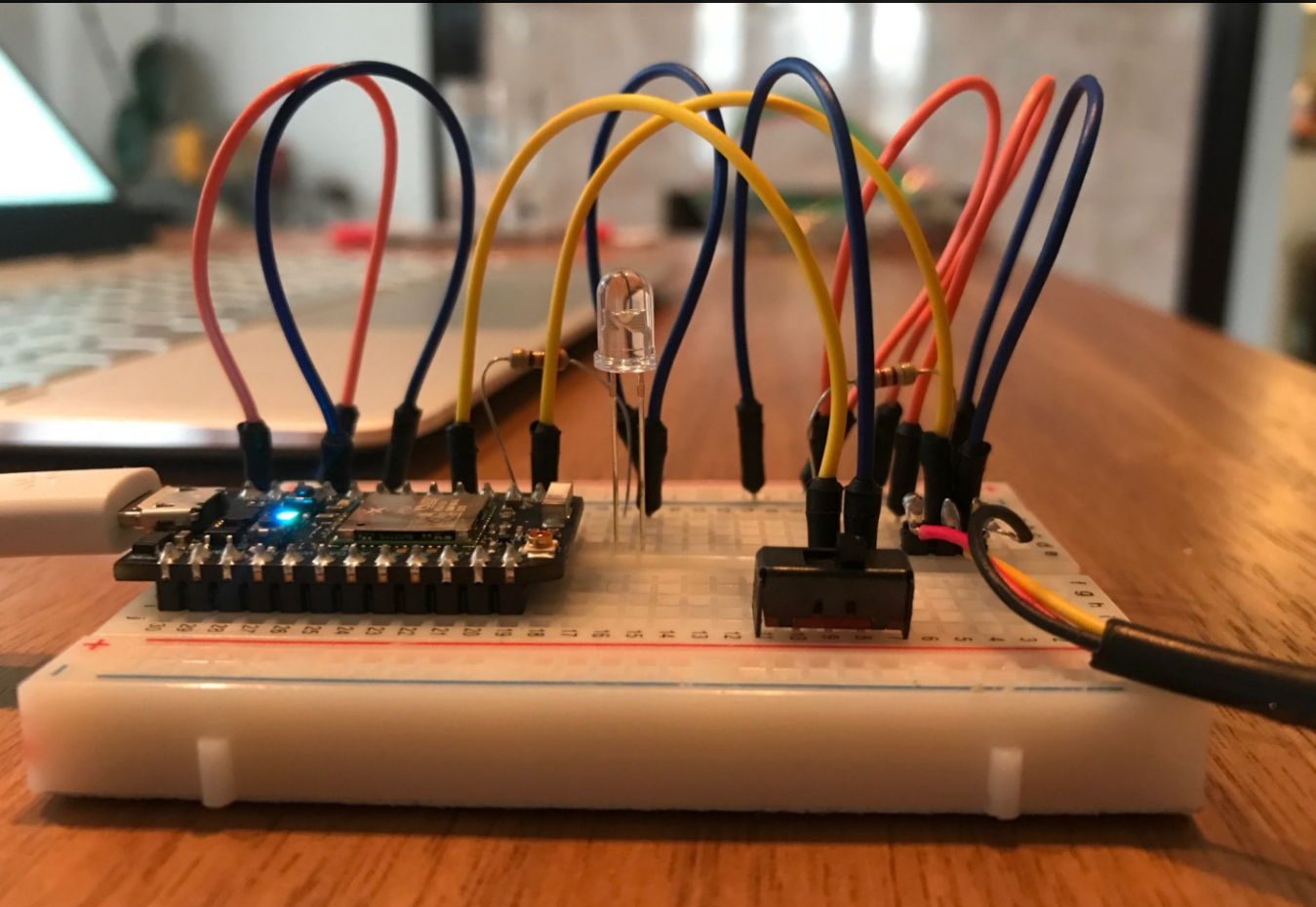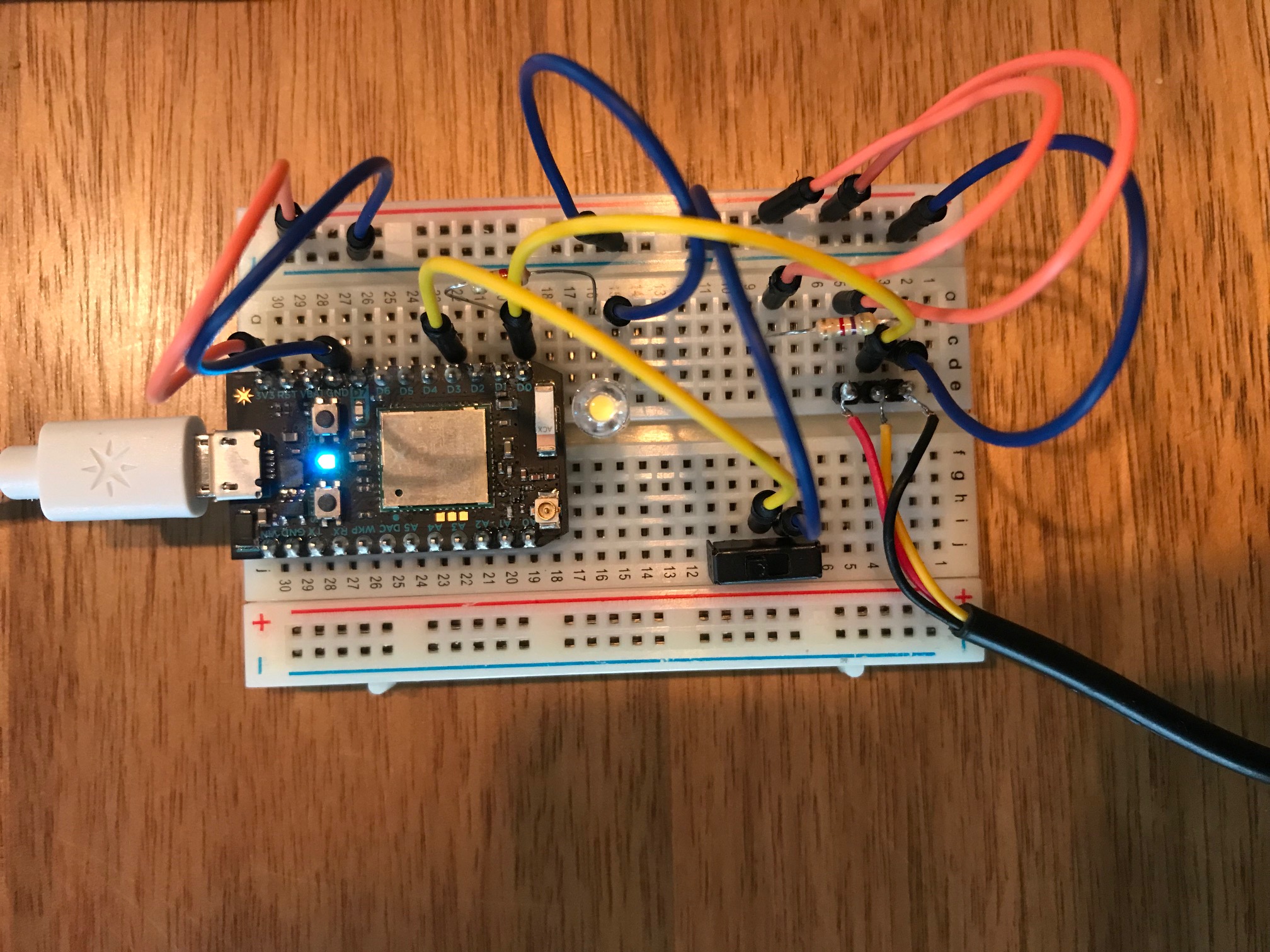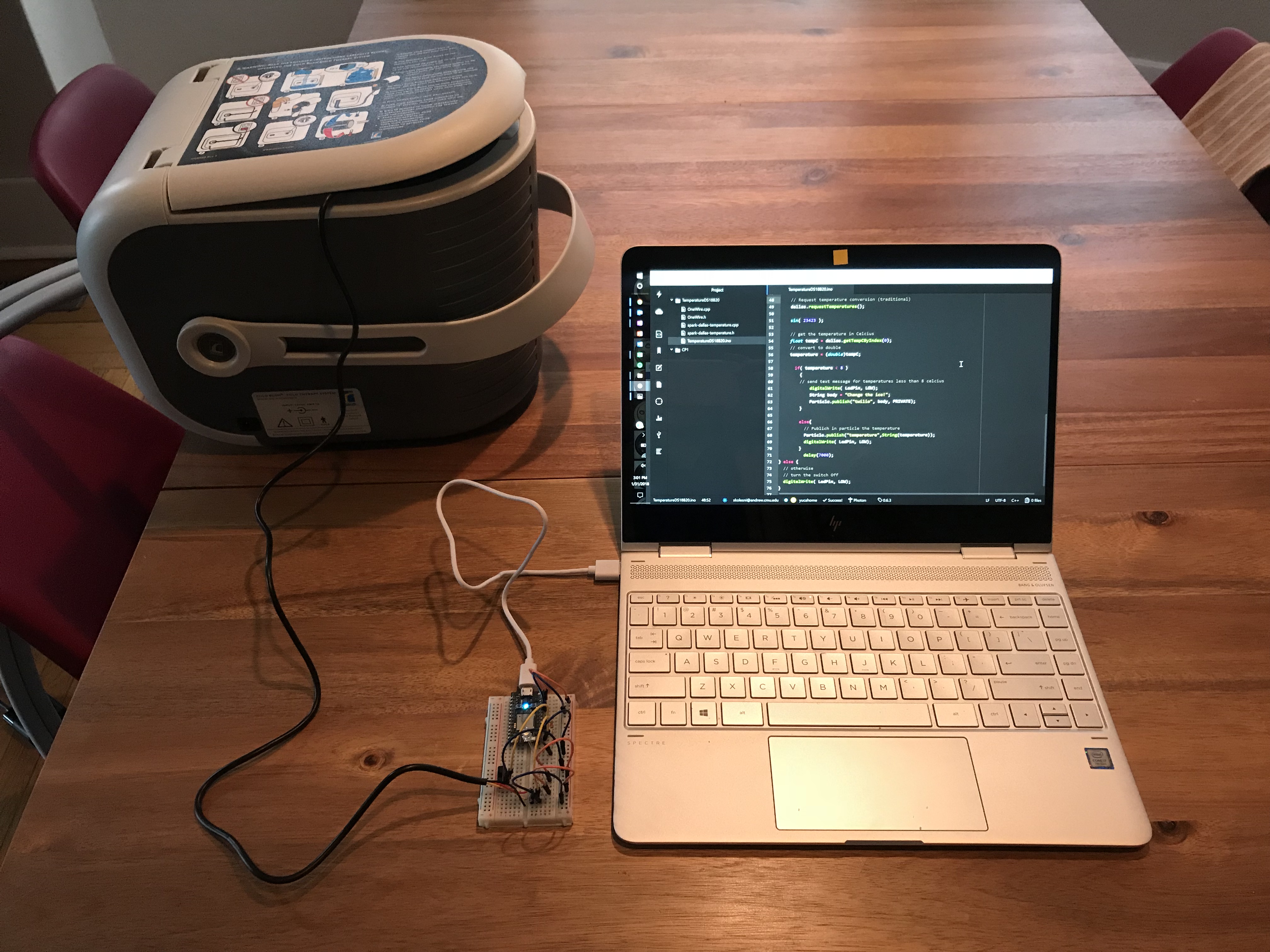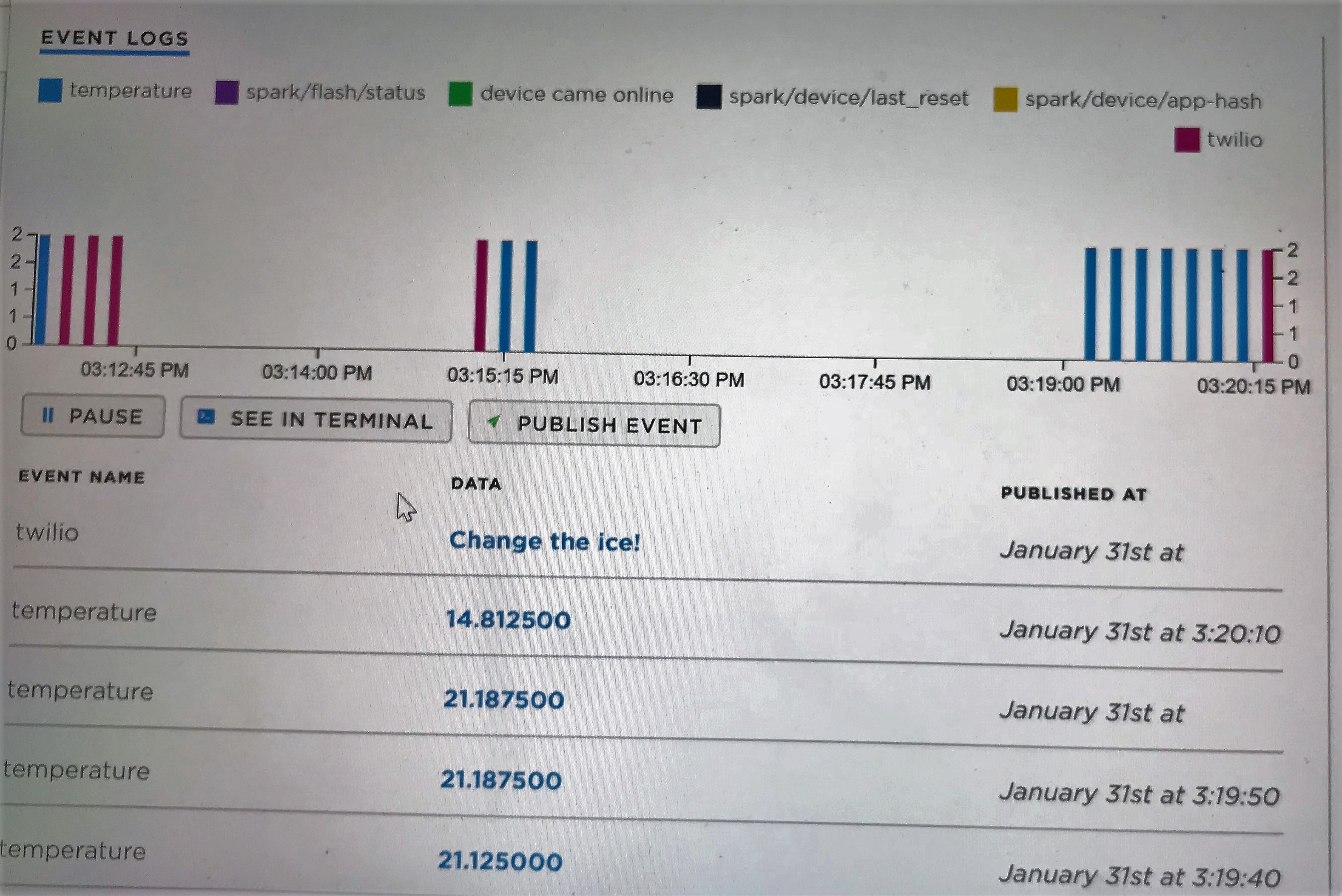Process:
For this project, I used the following steps:
1. Understand how to use the sensor: I added the temperature sensor to the breadboard and built a code to read its temperature with the help of reference 1.
2. Build the output: I created an account with Twilio and connected it to the particle Webhook so I can send text messages when needed with the help of reference 2.
3. Add a switch as input: I added a switch as an input for my project, incorporated the additional code and tested it with the help of reference 3.
4. Incorporate an LED to confirm the flow of data: Finally added an LED light to indicate that sensor data was been recorded by particle.
Challenges:
My temperature sensor kept giving me an error which I thought was a problem with the code or circuit. Turns out it's a sensor error that is making my project send a random text when the sensor reads a temperature of -127 Celcius. I also had to understand how to leverage the “if else” statements to ensure that I get the text message at the accurate time.
Reflections:
I learned to break my steps into small components and then test them to see how they worked. From there, I could easily identify which parts were not working and needed to be checked.




